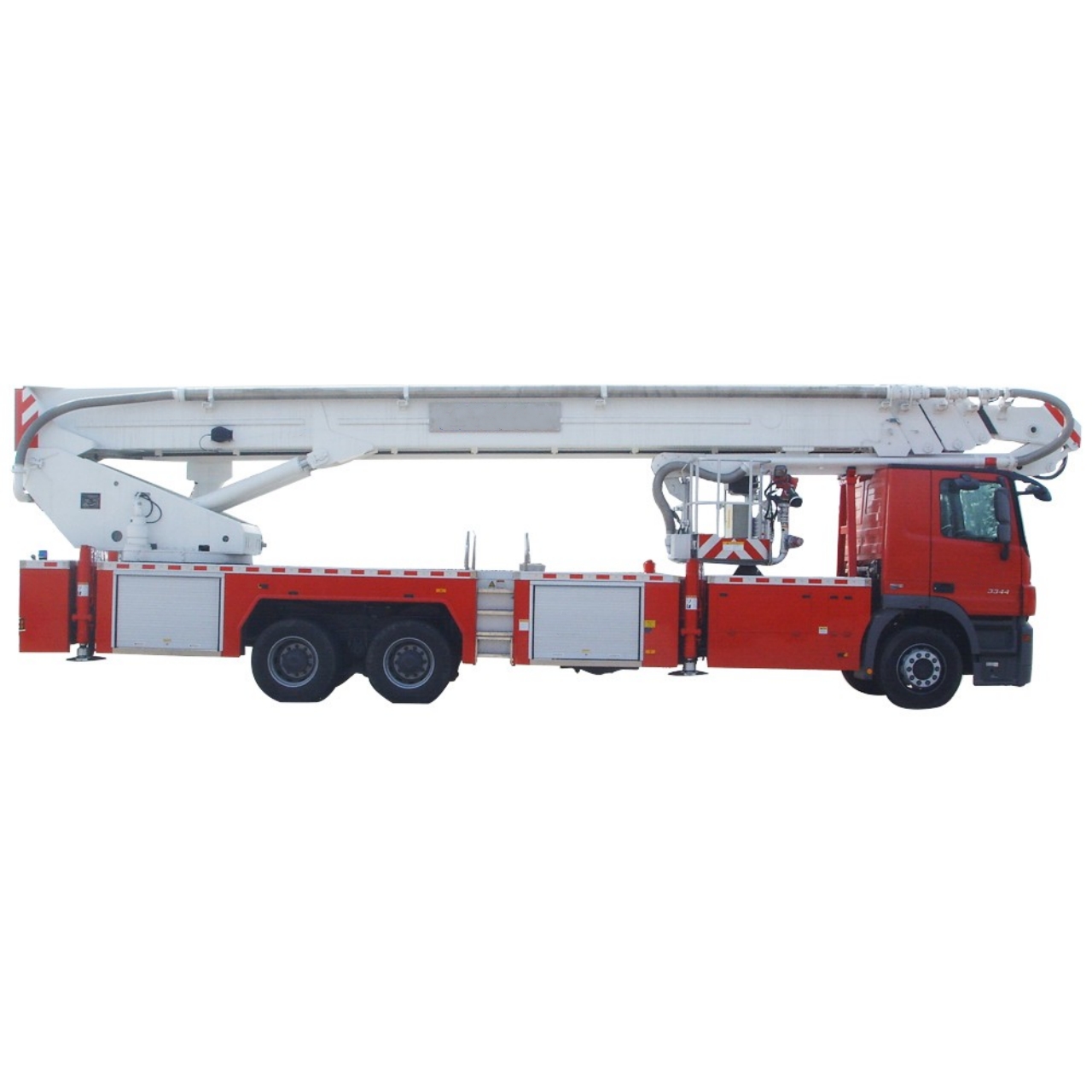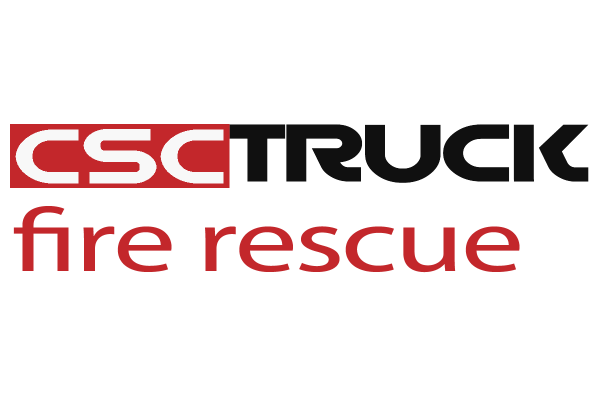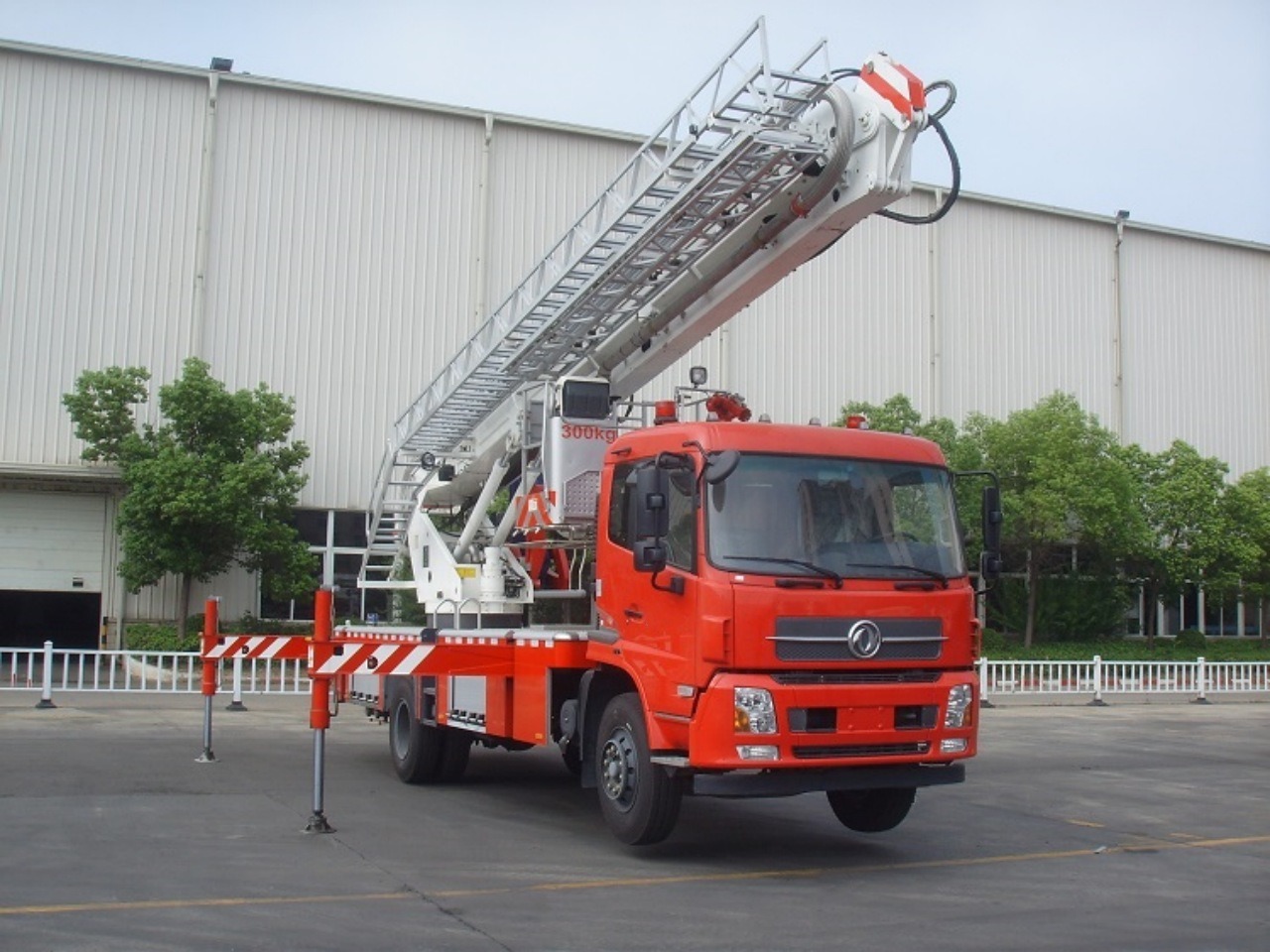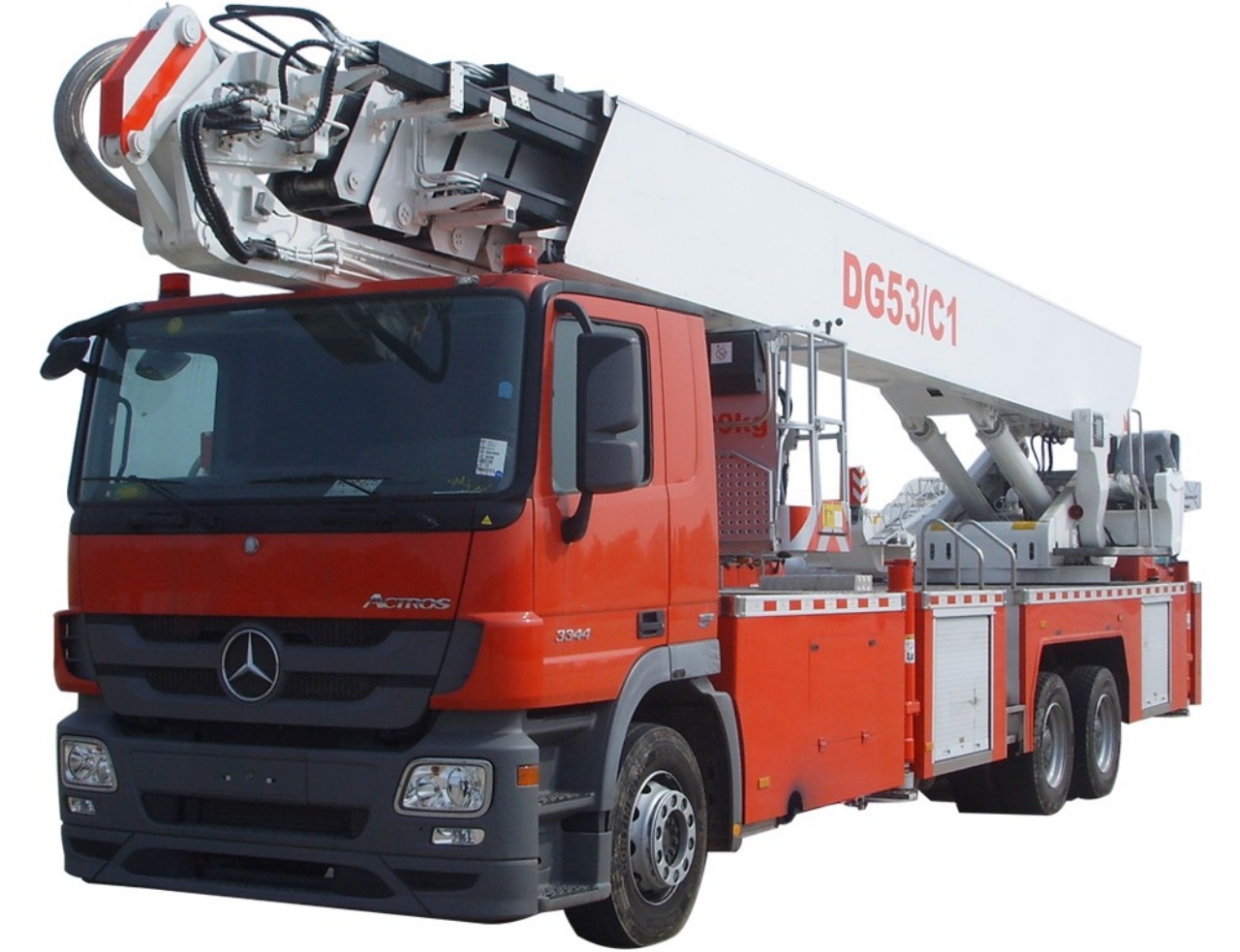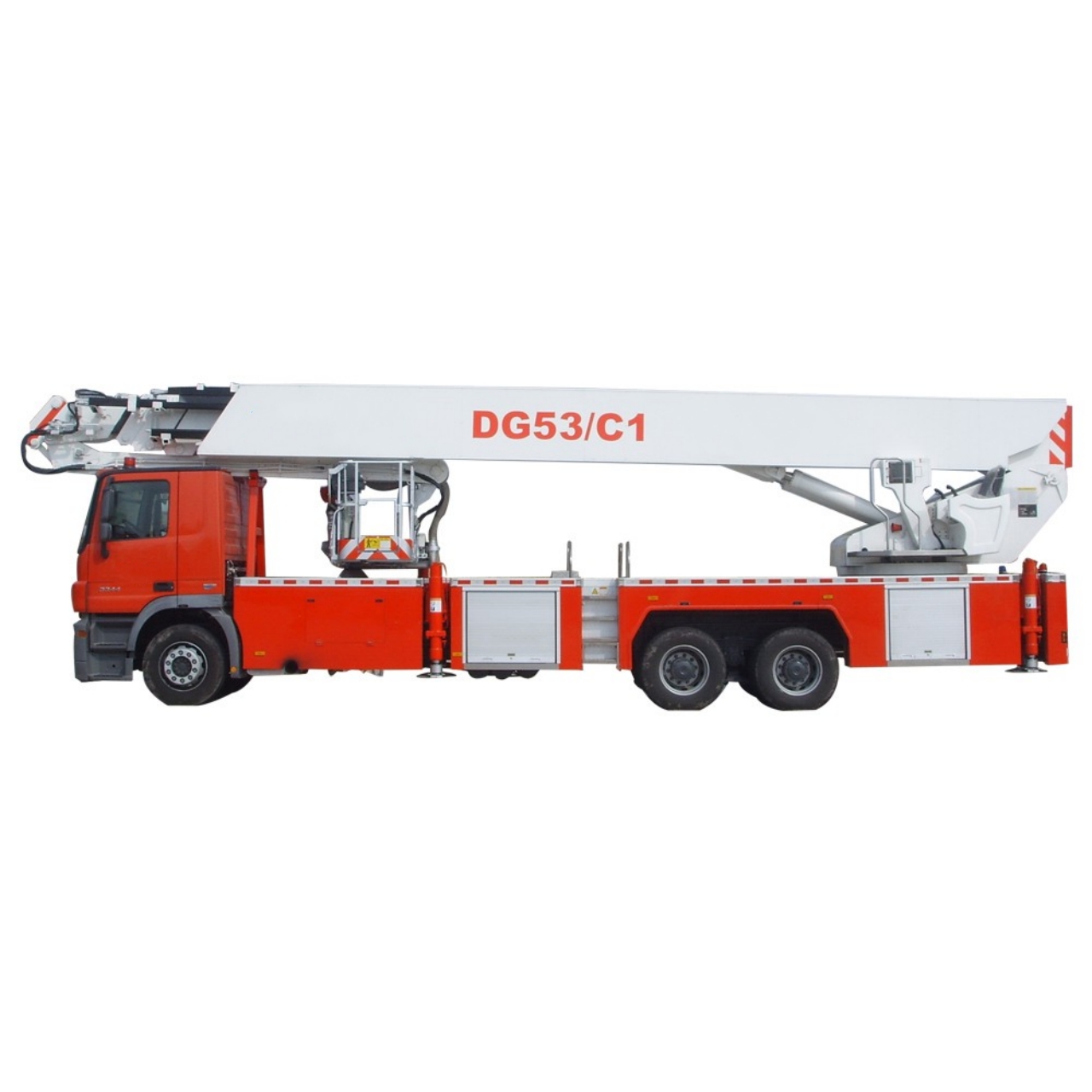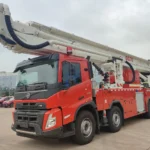In firefighting, rescue operations, and various industrial applications, reaching elevated heights safely and efficiently is a common requirement. 2 primary tools used for this purpose are aerial ladders and aerial platforms (also known as aerial work platforms or AWPs). While both have their respective roles and capabilities, there are distinct advantages that make aerial platforms a preferred choice in certain scenarios. This article explores 1 key advantage—greater safety and stability for personnel and equipment—and elaborates on how this advantage can be critical in high-stakes environments.
Understanding Aerial Ladders and Aerial Platforms
Before diving into the comparison, it’s important to understand what aerial ladders and aerial platforms are:
- Aerial Ladder: This is an extendable, mechanically operated ladder mounted on a fire truck or similar vehicle. It allows personnel to climb up or down manually, carrying equipment or rescuing individuals. Aerial ladders often come with a fixed or rotating base, and some are equipped with water nozzles for firefighting.
- Aerial Platform: Also mounted on a vehicle, this equipment consists of a basket or cage attached to an articulating or telescopic boom. The platform is hydraulically elevated and controlled, allowing personnel to be lifted directly to their target location while standing on the platform.
The Advantage: Greater Safety and Stability
One of the most significant advantages of an aerial platform over an aerial ladder is enhanced safety and stability for operators. This is especially crucial in hazardous operations such as firefighting, high-rise rescues, and electrical or construction work.
1. Enclosed Work Area for Personnel
Aerial platforms provide a secure, enclosed area—usually surrounded by guardrails—where 1 or more workers can stand, operate tools, or assist victims. This is particularly beneficial in the following ways:
- Fall Protection: The risk of falling is greatly reduced compared to an aerial ladder, where personnel must maintain balance while climbing or descending.
- Space for Equipment: Tools, hoses, or medical gear can be safely placed inside the platform without the operator having to carry them while climbing.
- Two-Handed Operation: Workers can use both hands for tools or rescue activities, whereas climbing a ladder typically requires one hand for stability.
2. Improved Stability in Operation
Aerial platforms are usually equipped with stabilizers or outriggers that extend from the vehicle, providing a steady base for operation. The boom mechanism also moves smoothly, minimizing swaying or jolting:
- Minimized Motion: Because personnel do not climb the structure themselves, there’s less vibration or shifting, which improves safety and comfort.
- Greater Load Capacity: Platforms can often carry more weight than ladders, allowing multiple workers or victims to be lifted at once.
- Controlled Movements: The platform can be moved slowly and precisely, positioning workers exactly where needed.
Additional Safety Benefits
Although stability and security are central to the advantages of aerial platforms, they come with several related benefits that enhance safety and efficiency in various scenarios:
3. Ease of Rescue Operations
In emergency rescues, particularly in high-rise fires or building evacuations, using an aerial platform makes it easier to assist people with limited mobility. Instead of requiring them to climb down a ladder, rescuers can simply lift them into the basket and bring them down safely.
- Ideal for the Injured or Elderly: A stretcher can fit inside many aerial platforms, which is not possible on narrow ladders.
- Greater Confidence for Victims: Many civilians, especially children and the elderly, feel safer being lifted in a platform rather than navigating a ladder.
4. Operational Versatility
Aerial platforms are often mounted on booms that can articulate or telescope, allowing access to hard-to-reach locations, such as overhanging ledges or behind obstacles. This increased maneuverability makes the platform a more versatile tool for complex rescue or maintenance tasks.
5. Reduced Physical Strain
Personnel using an aerial ladder must climb up and down manually, often while carrying heavy gear. In contrast, an aerial platform allows them to ascend and descend while remaining stationary within the lift, conserving energy and reducing fatigue, an important consideration during long shifts or multiple incidents.
Real-World Applications
Let’s consider some scenarios where the advantages of aerial platforms are evident:
Firefighting in High-Rise Buildings
When fighting fires on upper floors of buildings, platforms allow firefighters to spray water directly into windows while standing on a secure surface. They can carry hose lines, break windows, and operate nozzles with more stability than they could on a ladder. Platforms equipped with water monitors or turret nozzles can also deliver large volumes of water without the need for personnel to hold hoses manually.
Utility and Maintenance Work
Utility companies often use aerial platforms for electrical line maintenance, tree trimming, or repairing signage. The ability to work hands-free, securely surrounded by guardrails, dramatically reduces the risk of falls and increases efficiency.
Industrial and Construction Sites
On construction sites, workers use platforms to install windows, conduct inspections, or perform facade work at height. The platform offers workspace for tools and materials, which is impractical on a ladder.
Limitations and Considerations
While aerial platforms offer many advantages, they do have limitations:
- Bulk and Weight: Platforms and their supporting vehicles are often heavier and less agile than ladder trucks.
- Access in Tight Spaces: Narrow alleys or rough terrain may restrict the deployment of platforms.
- Cost and Maintenance: Platforms tend to be more complex and expensive to maintain than ladders.
However, in situations where safety and operational stability are the top priorities, such as rescue, high-altitude firefighting, and electrical work, the benefits usually outweigh these drawbacks.
Conclusion
The key advantage of using an aerial platform over an aerial ladder is the increased safety and stability for personnel and equipment. This advantage is vital in high-risk operations, offering fall protection, greater load capacity, ease of movement, and improved conditions for both workers and victims.
While aerial ladders still have an essential role, especially where speed and agility are necessary, platforms excel in scenarios requiring secure, controlled, and sustained access to elevated work areas. By understanding the strengths of each system, emergency responders and industrial professionals can make informed choices about the right tool for the job.
